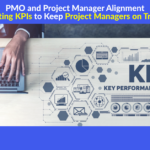Over the past couple of weeks, the focus has been on the action that can be taken to ensure that projects land well with the end users or, what to do when they do not land well (see How to prevent your project from failing to Land and Action plan when your project does not land).
This is helpful in respect of easing the implementation of a project. However, it does not matter how much effort you put into change management to land the change if what is being delivered is not aligned with the objectives of the project. Even with the best efforts to manage the stakeholders, the outcome will not be fit for purpose, your project will not have landed at the right destination.
Wrong Destination Risk (1 in 60 Rule)
Since the 1960’s, there have been many exciting missions to space. Flying a man to the moon probably being the most note worthy.
The “1 in 60 rule” states that for every mile you fly 1 degree off course, you will miss your target by just under 100 feet (30.48m). Given the distance between Earth and objects in space, such as the moon, it only takes the rocket to be 1% of course after launch for the destination to be missed by a staggering 23,890,000 feet (7,281,672m). This would really be a case of “Houston we have a problem”.
Thinking about a project. If your project deviates from the required outcome early in the project cycle, the greater the impact to the end result.
Course Correction Risk
The further a rocket has travelled from the launch pad, the intervention to correct course becomes much bigger. There is even a point where there is not enough time left to correct and the target will be missed.
The same applies to a project. The earlier the deviation from course is identified, the greater opportunity to make smaller (less drastic) interventions to meet the required objectives.
What this means for your project?
If your project is not on course, there is a high probability you will miss your objectives. The earlier the project goes off course, the higher the probable impact.
Course correction becomes harder as the project progresses. So the earlier the intervention, the improved chance to meet the objectives,
Project Flight Control
With the risk understood, what action can you take?
The best and most effective action is to ensure that your project is on the right course from the start. This is much easier said than done. In fact it is probably impossible.
If you could punch in the course of the project at the start and then, on project autopilot, it landed perfectly, you would not need project managers.
The reality, the project manager with support from the PMO must be checking project flight path on a regular basis.
The good news there are a number of tools that can be utilised.
Regular Review
This is simply checking in with team members to ensure that the project is progressing as anticipated.
The project manager should be asking questions regarding scope and checking this back to the signed-off requirements looking for any deviation.
Peer Reviews
More formal than the regular reviews. At set points in the project, independent reviews should take place that what is being delivered is aligned to what was agreed.
Tollgates
Similar to peer review. Set check points where progress and artefacts are reviewed against pre-agreed criteria. The project can only move forward if the criteria is met.
Assurance / Audit Review
This is where an independent team reviews progress to identify where process is not being followed as this may mean that requirements are not being met.
Risks & Issues
These can push your project off course. Therefore, you must have a robust process for identifying, reviewing and managing risks and issues.
Validate Assumptions
If plans are based on assumptions, you must validate them early.
There are other techniques that can be used. The principle is to be actively monitoring against what has been agreed.
As part of this, it is important to encourage a culture where all team members are clear on the objectives and that they are automatically checking their progress and, if they find a deviation, they are confident to know that they can raise the issue as opposed to hiding it.
Summary
A small error in course direction of your project can have a serious impact. You must be actively monitoring and, where needed, be making early interventions.






